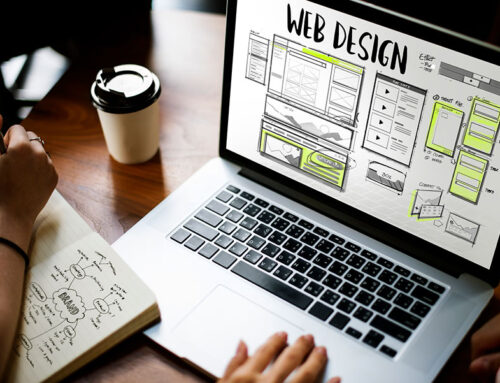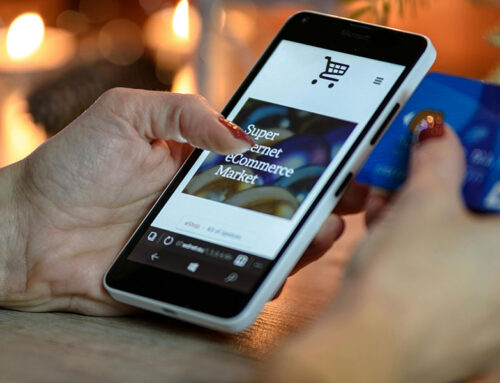Most Brands Downplay the Importance of Brand Typography
No matter what you say, if you don’t say it well, it will fall on deaf ears. Brand typography is the text version of this. Without taking brand typography into consideration, the content of text might as well be invisible. Unfortunately, most brands, downplay its importance. They’ll do a quick scan of available fonts, pick one that they like, and go with it. In most cases, without too much extra thought, it’s released, and that’s that.
While this is something any brand design agency you hire will deal with, it’s always great to understand how and why things related to your business happen the way they do. Typography is one of these crucial elements. It doesn’t mean you shouldn’t trust your branding firm, but you will have a much more adequate understanding of the brand identity design process if you at least partially know why one font is better than the other for your business.
Brand typography, however, communicates things about brands that are not always easy to pick up on. The devil is in the details, as they say. And with brand typography, everything rests on the feel and vibe, not the most obvious things. But alas, as we know, vibes can turn people on or off in an instant without any logical explanation. So, whether you are building a brand from scratch, redesigning it, or releasing a reinvented product, it’s time to go deep into the dynamics of brand typography and figure out which one works best for you.
The mediums you use for communication are where your brand typeface will feature: the product itself, manuals, services page, social media posts, everything. Your brand typeface will be vital in establishing a relationship with your audience and expressing the personality of your brand non-verbally.
For large corporations, this font will be reproduced everywhere. Hence, it is essential to find one that fosters brand recognition but is also long-lasting and legible. Choosing a brand font doesn’t mean randomly selecting one and calling it a day. It means piecing together a rich palette of typefaces that communicate your brand’s essence. This means you will be creating a font family that includes a wide range of weights and styles and allows your in-house designers to play around and get creative.
Another essential thing to factor in is the playing field of your brand. Is it global and multilingual? Or is it intended for English speakers only? If your case is the former, then craft your font family accordingly. Typeface popularity is another factor to consider. Geometric sans these days due to the combination of modernity and elegance. Several geometric sans fonts worth considering include Century Gothic, Futura, Spartan, and ITC Avant-Garde, among others.
Serif or Sans Serif? That Is the Question
The most basic fonts distinction is between serif and sans serif. The differentiating factor is the stroke at the end of the alphabet. It is present in serif, but not in sans serif (sans means ‘without’).
The advantage of sans serif is felt most strongly in print typography. They help combine the alphabets and make for a coherent and logical reading experience. The resulting horizontal rows of text are easier to read and smooth out the process of switching from one line to the next. They also give off an air of classiness and are felt to be literary and high-end.
Sans serif, on the other hand, wasn’t found to be as good for printed material as serif. Reading felt harder and so they were not used in newspapers, magazines, or books. However, with the coming of the digital age, sans serif fonts became popular. They are easier to read and follow on a screen when compared to serif fonts. They were also more comfortable to reproduce digitally since they work well with low resolution. Wherever they are used, they give off a feeling of strength, clarity, and modernism.
In keeping along these lines, your font palette could consist of sans serif fonts for your digital presence and serif ones for print media. Such a combination is a good option.
Choosing Between Custom, Open source, and Primary
In this realm, you have a few options: opensource free typefaces, license ones for a fee, or take the creative route and design your own.
Although opensource typefaces are free, they are also generic and lack variety. Their popularity means other companies will likely use them, impeding your brand’s ability to stand out. Google Fonts, Font Library, Font Squirrel, and Font Ninja all provide these types of typefaces.
With primary typefaces, you have much more variety. But, the licensing fees can add up. Especially if you have to pay for the bold, italics, or underlined versions and need to purchases licenses for collaborators. Consider using FontShop, Fonts.com, and Typekit to find primary typefaces.
Finally, if you are feeling creative and have the time and money, you could design your fonts. You would have complete autonomy and space to do what you wish, but still, the final design would need to be approved by your team and seniors. If you are up for the challenge, you can look at Fontstruct, Glyphs Robofont, and BitFontMaker.
Questioning the Typeface
Now that all the typography tools and sites are at your disposal don’t feel overwhelmed. Decide on 10 to begin with and narrow them down to 5 (you’ll thank us later). Asking yourself the following questions will help you eliminate sites:
- Is this legible? Arguably the most crucial issue. If it is not readable, then no matter how beautiful or striking it is, it is going to turn people off. Make sure to check essential facets of grammar and punctuation, as well as the typographical representation;
- Is it unique? The answer should be yes – you want to stand out among your competitors, after all;
- Is it enduring? Are the selected typefaces available in multiple weights and styles? Does it have all the required characters?
- Is it flexible? Print or digital, website, or product – will your typeface work everywhere?
Match up
Now, you can start seeing the results of all the hard work you’ve done because it’s time to mix and match the selected fonts.
Use tools like Typetester, Font Pair, Flipping Typical, Typeplate, and TypeWonder to play and experiment.
Also, while you are experimenting, be sure to create and save mockups of all you are testing. These will help you to decide later what’s working and what’s not. Select these pairings keeping in mind that your typefaces are going to be used on your website, product, packaging, and more.
You might also want to check out typeface pairings by Canva to get the creative juices flowing.
Defining Proper Font Placement
This step is essential to ensure that your typography system is coherent and consistent across all channels. For each of the following choose a:
- Primary type: default typeface that reflects the overall brand;
- Secondary type: complements and supports the primary model. If the Primary is a serif, choose a sans serif here;
- Tertiary type: use for accents.
Also, determine which typefaces will be used for headings, subheadings, body text, product packaging, and callouts.
Combining all this knowledge, you can create a complete typographic/ visual brand guide (just like you did for the brand voice).
Conclusion
There you have it – a short guide to building proper brand typography that adds to the strength of your brand and its personality. Trust your branding design company to make decisions, but make sure to follow the process carefully. Don’t be afraid to ask questions if you don’t understand some of the choices. Your branding agency will want to create the best brand identity for your business, and if you know what’s going on, they should welcome your feedback on the work with open arms.






Leave A Comment